A 9-hour overnight bus stretched out ahead of us requiring some steel and determination to ensure that we were not going to arrive in a completely wrecked state. So armed with some food, warm clothing and books we settled down into our ‘beds’. The bus only travels overnight because Arequipa bus terminal is regarded as unsafe during the night – nobody is allowed in to collect arriving passengers until 0600. The hostel offered to collect us at 0700 and the welcome smile from Richardo was even more apparent as we were hassled and buffered on leaving the area to get to his car.
Our main reason for being in Arequipa is to do some trekking in the second deepest and widest canyon in the world – Colca. It’s twice as deep as the Grand Canyon. Our starting point was familiarisation of another new town and once we were settled into the hostel we went out on a little ‘recky’ with the help of a local map. It always takes us a day to find our bearings, pin-point sites we want to see and, of course, find food.
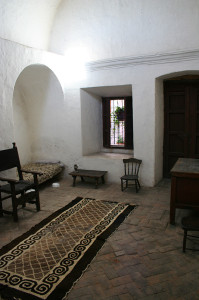 The city itself is small and quite delightful. The highlight was seeing a 16th century monastery that used to be home to around 250 nuns. In 1579, less that 40 years after the Spanish arrived in the city, the Santa Catalina Convent was founded. In the early days, girls from well-off social backgrounds entered to serve as cloistered novices and then nuns, never again to return to their families and home. All arrived from Spain as tradition decreed that the second daughter would automatically be sent into the church. The first daughter is married, the third daughter was required to look after the parents until they passed away. The poor sod who was sent to Peru was only allowed 25 prescribed items, they lived in private ‘cells’ leading isolated lives surrounded by high walls. The grounds are fantastic – 2 hectares, nearly 5 square miles totally enclosed. The convent has its own streets, courtyards, chapels (of course!!) homes, kitchens, refectories and receiving rooms for the senior clergy of the church. The only receiving area for the nuns was a ‘speaking room’, a thin corridor on which the nuns sat on one side, in the dark and shielded by a heavy grill. They could see their visitors but the visitors could not see the faces of the nuns. The convent has been badly damaged over the years by earthquakes. However, it has been restored and preserved and is now open to the public. There are only 20 nuns remaining in a new convent running alongside and within the original walls. The nuns no longer have to live such a restrictive life.
The city itself is small and quite delightful. The highlight was seeing a 16th century monastery that used to be home to around 250 nuns. In 1579, less that 40 years after the Spanish arrived in the city, the Santa Catalina Convent was founded. In the early days, girls from well-off social backgrounds entered to serve as cloistered novices and then nuns, never again to return to their families and home. All arrived from Spain as tradition decreed that the second daughter would automatically be sent into the church. The first daughter is married, the third daughter was required to look after the parents until they passed away. The poor sod who was sent to Peru was only allowed 25 prescribed items, they lived in private ‘cells’ leading isolated lives surrounded by high walls. The grounds are fantastic – 2 hectares, nearly 5 square miles totally enclosed. The convent has its own streets, courtyards, chapels (of course!!) homes, kitchens, refectories and receiving rooms for the senior clergy of the church. The only receiving area for the nuns was a ‘speaking room’, a thin corridor on which the nuns sat on one side, in the dark and shielded by a heavy grill. They could see their visitors but the visitors could not see the faces of the nuns. The convent has been badly damaged over the years by earthquakes. However, it has been restored and preserved and is now open to the public. There are only 20 nuns remaining in a new convent running alongside and within the original walls. The nuns no longer have to live such a restrictive life.
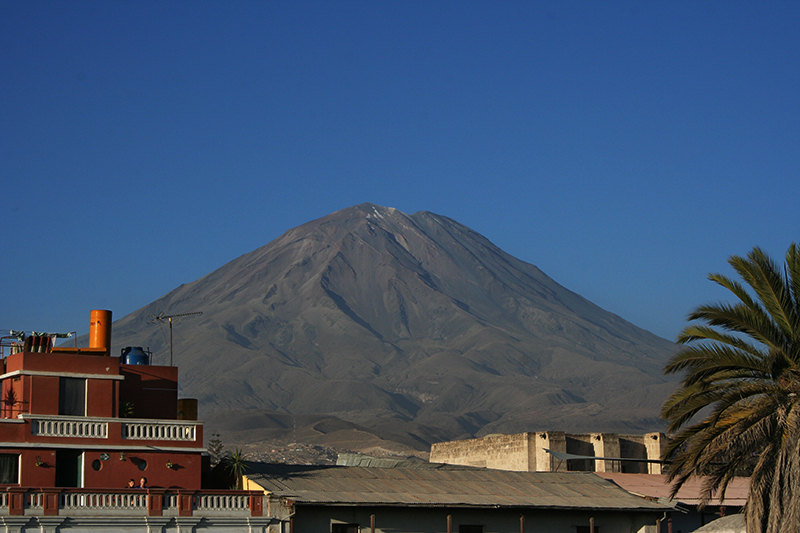 The roof tops of the monastery offers lovely views of the volcano, El Misti, that overlooks the city. A perfect cone at 5,822m and guarded on either side by mountains Chachani & Pichu-Pichu. During our city walks we crossed over the river to a small suburb called Yanahuara in which there is a 1750 mestizo-style church with magnificent churrigueresque facade. On the same plaza is a mirador through whose arches there is a fine view of El Misti and of the city.
The roof tops of the monastery offers lovely views of the volcano, El Misti, that overlooks the city. A perfect cone at 5,822m and guarded on either side by mountains Chachani & Pichu-Pichu. During our city walks we crossed over the river to a small suburb called Yanahuara in which there is a 1750 mestizo-style church with magnificent churrigueresque facade. On the same plaza is a mirador through whose arches there is a fine view of El Misti and of the city.
But it has to be said that the purpose of this spot and the highlight of these 4 days has been the journey to and trek within the Colca Canyon.
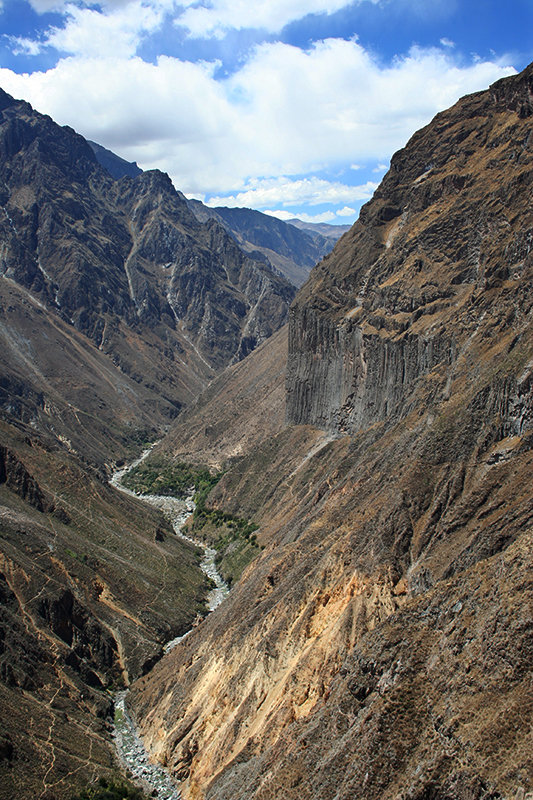 So it came to pass that we awoke at 2.30am for a 3.00am pick up and a long bus ride, high & deep, into the Andes. On a glorious, cloudless day we entered into the valley, passing small communities and vast expanses of farming terraces. We came to a stop at El Cruz del Condor, a high vantage point where we could observe the graceful Condor soaring on thermals along and over the canyon. These birds feed off dead animals, relying on others such as the fox to kill and open prey before they muscle in and gorge themselves on the open flesh. There are also eagles here and we even saw a falcon but they seem insignificant compared to the magnificent Condor.
So it came to pass that we awoke at 2.30am for a 3.00am pick up and a long bus ride, high & deep, into the Andes. On a glorious, cloudless day we entered into the valley, passing small communities and vast expanses of farming terraces. We came to a stop at El Cruz del Condor, a high vantage point where we could observe the graceful Condor soaring on thermals along and over the canyon. These birds feed off dead animals, relying on others such as the fox to kill and open prey before they muscle in and gorge themselves on the open flesh. There are also eagles here and we even saw a falcon but they seem insignificant compared to the magnificent Condor.
A further, long bus ride over a dirt track brought us to the start point of the trek at 3,300m. We get sweeping views along the canyon that stretch for miles and the little, unspoilt villages that dot the opposite side seem impossibly far away. The bottom, where the Rio Colca cuts through the rock looks a very long walk indeed. In the background looms the grey menacing mass of Sabancaya (5,976m), one of the most active volcanoes in the Americas and its more docile neighbour, Ampato (6,288m). At random along the sides of the canyon there are springs where water seems to either seep or leap out of the rock. The whole vista is breathtaking.
We start the descent down a steep path that has large and very large rocks inhibiting our journey. It is hard work on the legs and sometimes a struggle to keep our balance. However, we stop often as Pepe, our guide, takes the trouble to point out and explain everything of significance along the way. He tells us about one of the species of Cactus that the local Cabana and Collagua peoples use ‘medicinally’. A small amount of the plant helps them to sleep but a larger amount induces hallucinations during which the user appears to go mad. But the next morning when the druggie awakens, they feel as if their soul has been cleansed. Apparently, they do this 3 or 4 times a year. Pepe seems so enthusiastic about this drug that I feel he is going to offer it to us at any moment. I am ready to tell him that if my soul needs cleansing I would rather help an old lady across the street.
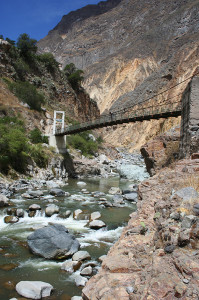 After two and a half hours walking in the midday heat, we reach the rickety bridge at the bottom of the canyon that crosses the river. Despite drinking gallons of water, we feel dehydrated and in need of a rest. Next to the bridge there are half a dozen local women who shout at us when we appear, drawing our attention to the bottles of water and fizzy drinks they sell. At twice city prices they are doing OK for themselves and, under their voluminous dresses, we spot brand new walking boots! Being a fellow of high principle I will not buy their wares, but Debbie, ever the practical one, gets us two bottles of water. My bottle is still sealed but the contents taste like river water.
After two and a half hours walking in the midday heat, we reach the rickety bridge at the bottom of the canyon that crosses the river. Despite drinking gallons of water, we feel dehydrated and in need of a rest. Next to the bridge there are half a dozen local women who shout at us when we appear, drawing our attention to the bottles of water and fizzy drinks they sell. At twice city prices they are doing OK for themselves and, under their voluminous dresses, we spot brand new walking boots! Being a fellow of high principle I will not buy their wares, but Debbie, ever the practical one, gets us two bottles of water. My bottle is still sealed but the contents taste like river water.
We climb up the other side of the canyon and half-an-hour later enter a small village where we get a rest and lunch. Debbie gets treated to vegetarian dish of cheese and rice and I get Alpaca (Lama) that I suspect has been dead some time.
After lunch, we climb again and cross fields terraced into the hillside. The local farmers have been working fields like this for thousands of years, using the springs that jump out of the rock for irrigation.
In some of the trees there are snake traps. Using old plastic two litre water bottles, a window is cut and on the inside animal blood laced with a drug is smeared. The snake is attracted to the blood and, when it takes a taste, falls in a stupor. If the snake is dead it is chopped up and used for medicinal purposes but, if the snake is caught alive, a far preferable option, it is used to relieve back pain. The poor reptile is held at either end of its length and rubbed across the back as if you were drying yourself with a towel. Apparently, this makes all the pain go away. Quite what the snake feels about it is anyone’s guess but I bet it won’t risk climbing any trees in future.
At 5.30pm we reach The Oasis (at 2,200m) where we stay overnight. We are in a somewhat bedraggled state covered in sweat, grime and dust and looking forward to a hot shower, a massage and a G&T. The accommodation was described as basic and for once the copywriters were not over egging it. We had a straw hut with walls that anyone could look through, a roof made from hessian and palm leaves, the floor was dirt studied with stones and the four beds were made from bamboo. If you sat on one end of them the whole shooting match tipped over, catapulting the pillow against the wall and onto the mud floor. There was no electricity but in the evening gloom it was easy to mistake it all for the Hilton.
No hot water either so we were forced to enjoy the cool waters from the mountain springs before Pepe cooked us spaghetti, something that we ate by candlelight. After dinner, there being no flat screen TVs or Sky Sports to watch, the whole camp (probably housing 50 fellow trekkers) went to bed to dream of warm linen sheets and a full English breakfast.
At 5.00am we were up and ready for the 5.30 start. We had been told that it would take around 3 hours to climb the 1,100m up to the top and that it was a steep, unforgiving climb. We had the option of hiring a mule to carry us up the trail but that seemed gutless and just not cricket. So we plodded off slowly. The first 10 minutes is a real heart starter as the body is rudely awakened as it is forced to lug a considerable mass uphill. Thereafter, you try to get into a rhythm of stepping and breathing so as to make the task more bearable in this high altitude. Our lungs are working at full capacity in the rarefied air. It is certainly very hard work, the trail is steep and studded with large stones, some knee high, that you have to climb over and there are precious few places that give you some respite. The views, when you can rest to appreciate them, are stunning: you feel as if you are in a very special place where it is a privilege to enjoy all that nature has to offer.
As we neared the top, we could see the mules coming. They had started some 30mins after us being much quicker. I rasped to Debbie ‘Oh no, the mules are going to overtake us’.
‘Was it your plan to get to the top before them?’
‘No, not really, I simply didn’t want to be flattened against the side of the rock by the stupid beasts.’
‘OK, if we go for it, we could get there before them!’
And so it was that a couple of idiots began almost running the last half mile to the top in a race that didn’t matter against the beasts of burden.
Eventually, after two hours and fifteen minutes of sweat and grind we reached the summit gasping for oxygen. Whereupon a gaggle of women started shouting at us in another attempt to sell us liquid. This time I bought an energy drink and I could not care less what it cost.
It was another half hour walk to breakfast but no one cared, all were in high spirits, full of feel good factor and brimming with a sense of achievement. A trip to the natural hot springs (39c) was a welcome reward and most enjoyable – a chance not only to clean off the abused body but also to stretch out tired muscles.
We had a typical rustic lunch on the way home and a chance to reflect on the wondrous place we had visited. One question that puzzled us and our room-mates, Hannah & Borg (Hanover, Germany) was how on earth the Inca tribes placed the bodies of their dead into ‘hanging tombs’ that are some 100m up a sheer rock face, from the dirt track road we were on.
The Colca Canyon does not have the wow, impact factor of the Grand Canyon but, nonetheless has a raw powerful presence that draws you to it and holds your attention to its beauty. Definitely worth another trip. Just not yet!
Of the 2 taxi journeys that we have taken in town we have had fun negotiating the fare down to the change that we have had in our pockets!

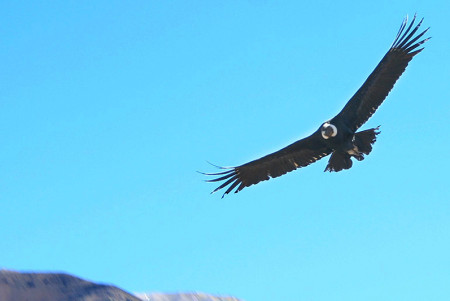
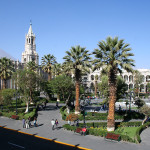
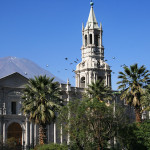
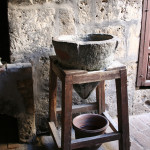
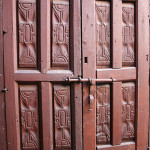
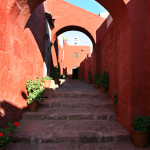
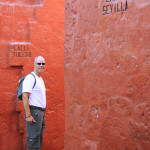
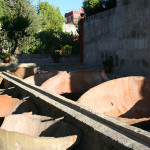
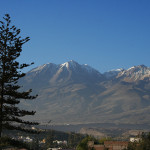
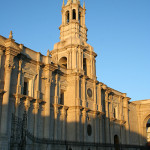
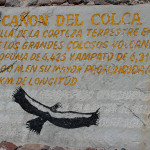
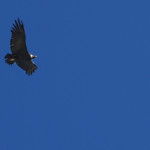
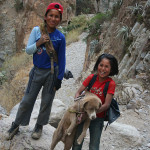
No comments yet.